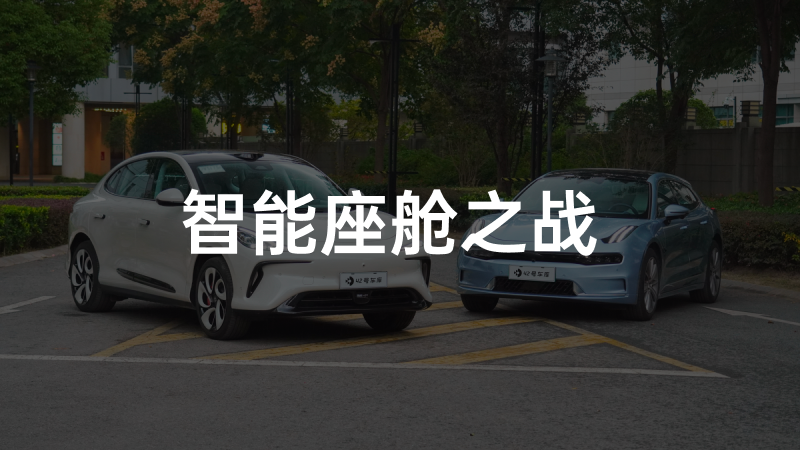Large screen, smooth operation, fun, and intelligence have become the core tags of a car cockpit.
Interestingly, this year is a key period for domestic brands to exert their strength with a price tag of RMB 200,000, and none of these superior intelligent cockpit experiences could be ignored. Last week, the IM LS6 hit the market with a starting price of RMB 229,900, and a limited-time right price starting from RMB 214,900.
However, in the same price category, there are formidable opponents like the Tesla Model Y, and also the similarly priced ZEEKR 001, making the competition quite fierce. This piques our curiosity about the standard of the IM LS6’s intelligent cockpit. Will the cockpit become a bonus point for this vehicle?
To verify this, we compared IM LS6 with ZEEKR 001 shortly after it was launched. Who has the stronger cockpit among the two cars?
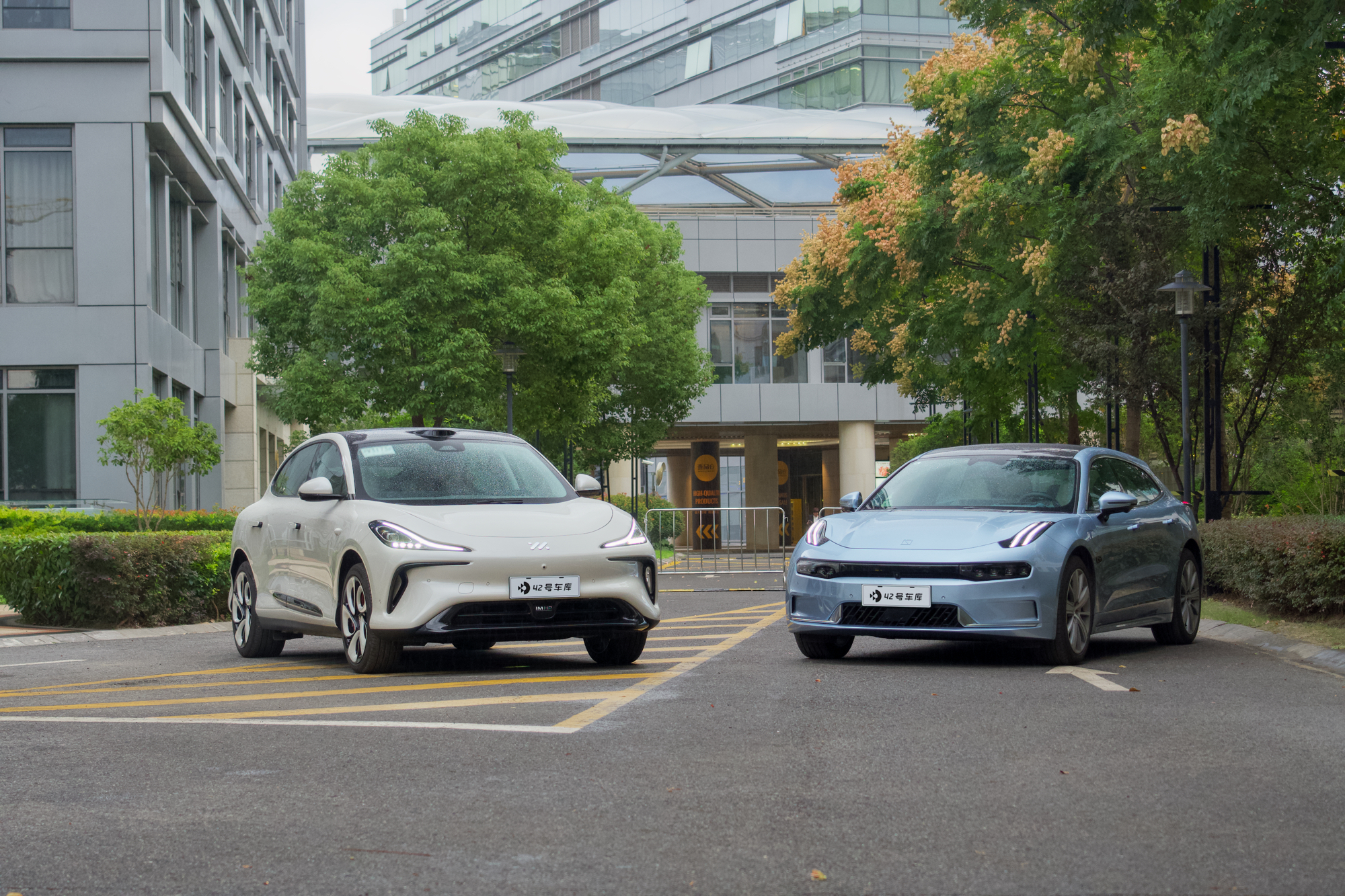
Intelligent with Hardware as the Foundation
The foundation of an intelligent cockpit is its hardware. Without the hardware, the experience would not be impressive.
Boarding the vehicle, visual experience correlates with the screen display effect, tactile experience with the smooth screen operation that follows your hand, and deeper, the chip of the car machine. The auditory experience, on the other hand, correlates with the sound. Thus, at the most basic level, comparisons should start from these three aspects.

How essential is the screen display effect? If it isn’t impactful enough, you might not even want to open the car door and give the car another glance. However, with a dazzling screen, your eyes will be irresistibly drawn, enticing you to sit in.
Upon entering the IM LS6, the first sense is a considerably broad view, unobstructed by the upper half circle of the steering wheel, raising and lowering screen, foldable interior rearview mirror – almost all the front row hardware seems to give way to my sight. The clever design of LS6’s hardware layout indeed won me over.
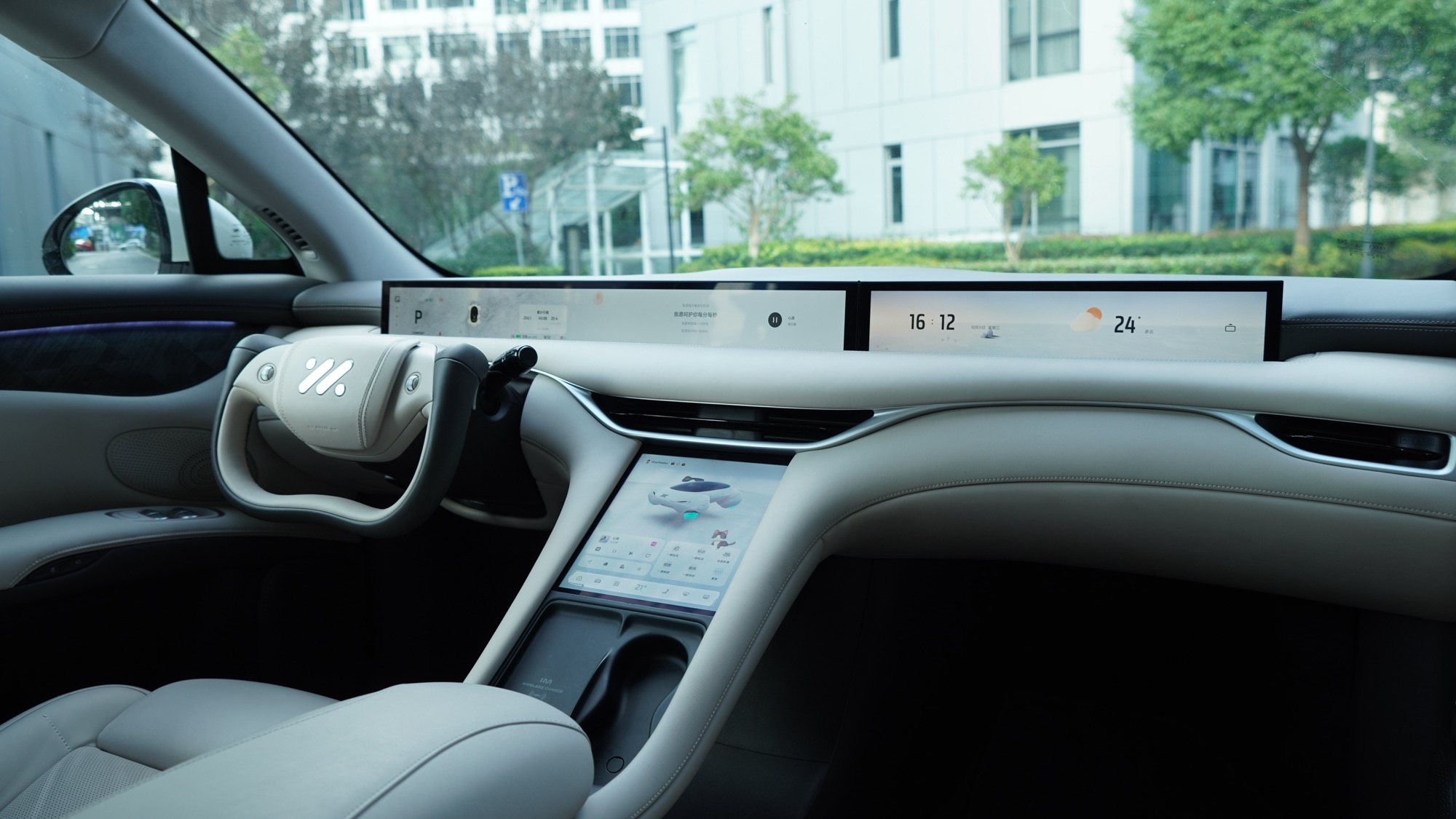
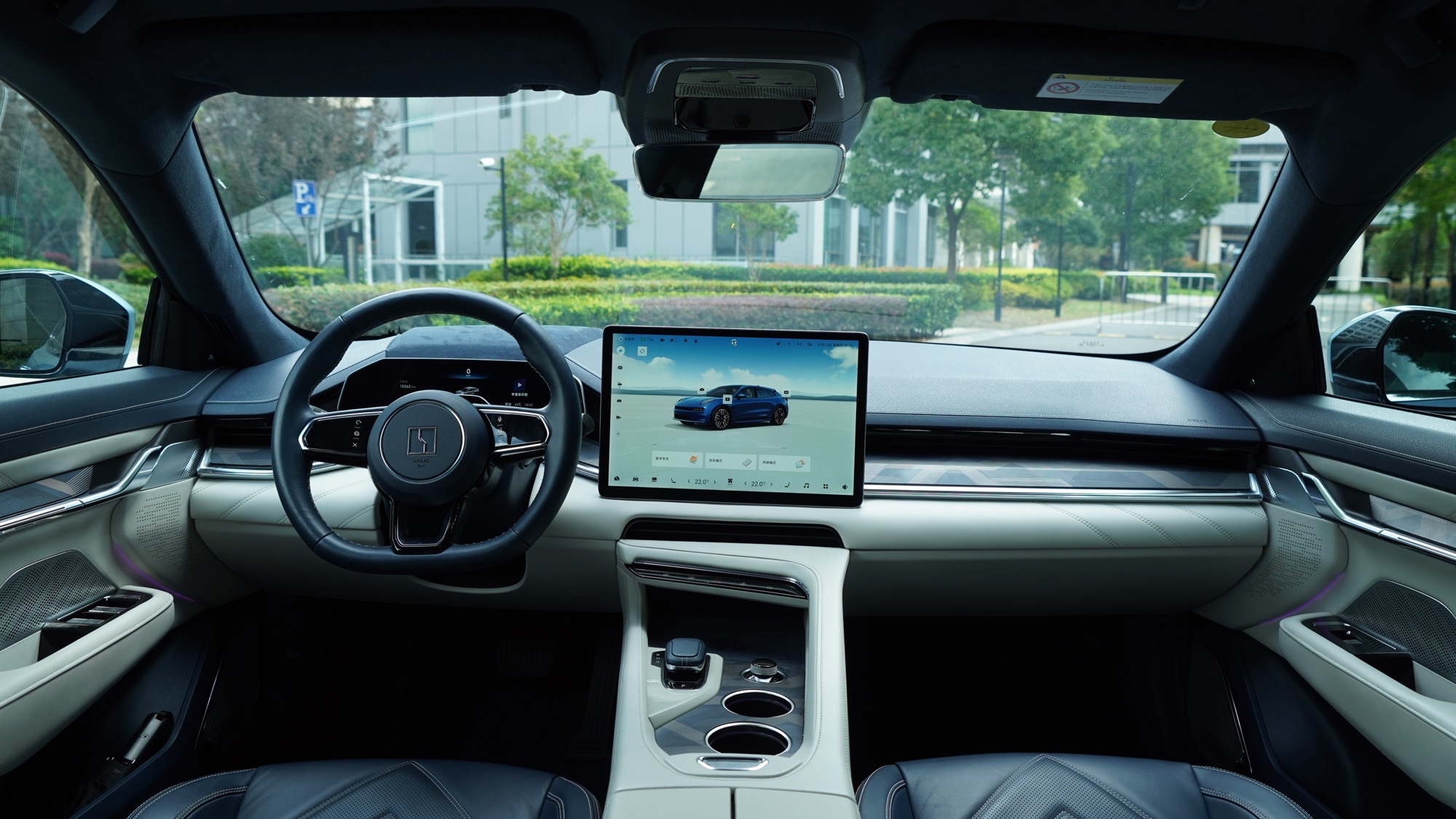
We put together a chart comparing the screen parameters of IM LS6 and ZEEKR 001. If we talk about the level of impression, IM LS6’s raising and lowering screen has a clear advantage.
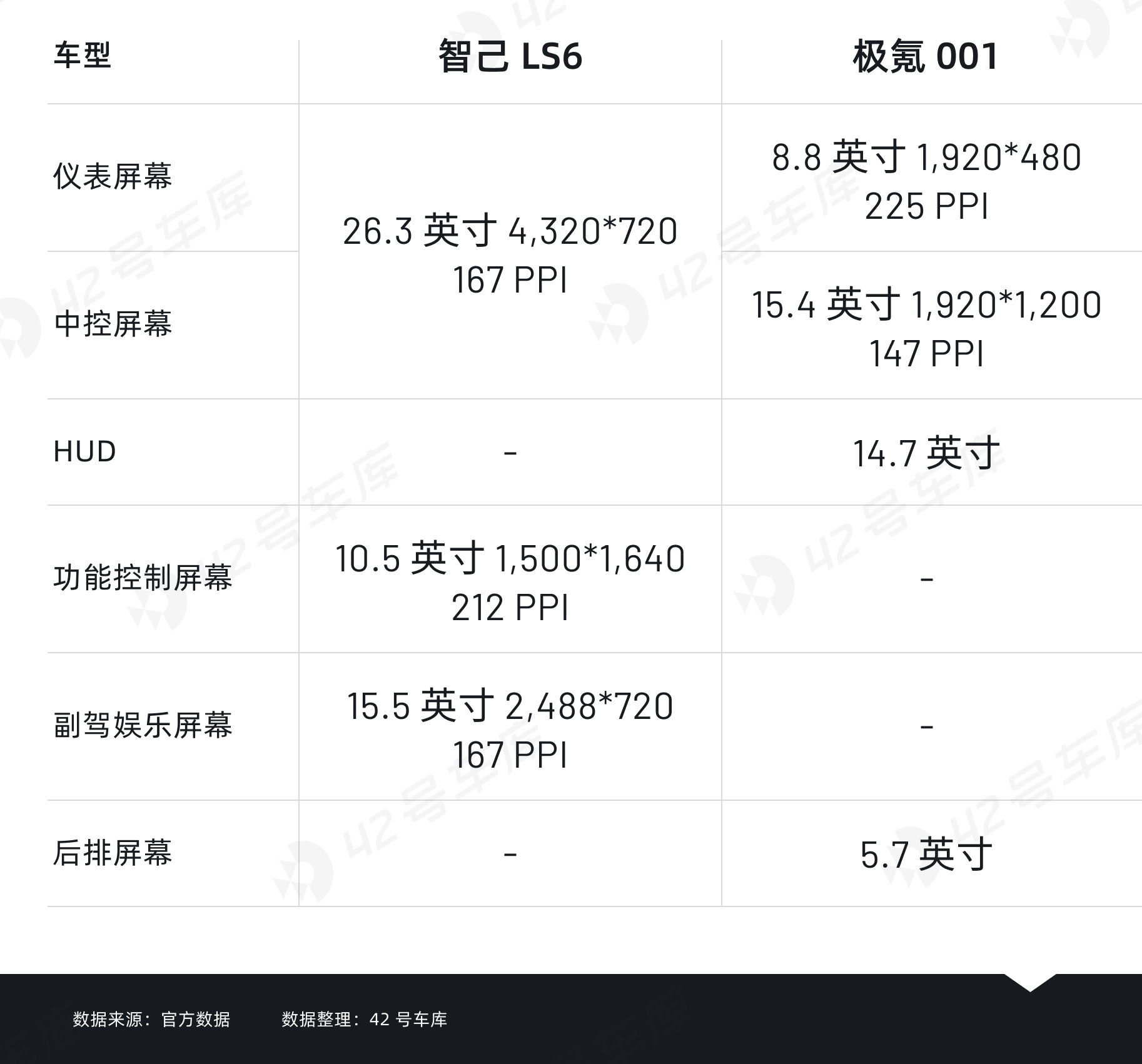
Close examination may reveal that the screen quality of IM LS6 is slightly more delicate, thanks to its higher pixel density. Both screens above have a pixel density of 167 PPI, while the pixel density of the control screen below is 212 PPI.The advantage of ZEEKR 001 lies in its instrument screen which is more delicate with a pixel density of 225 PPI, although the size is relatively small; the size of the center control screen is large enough, but its pixel density is lower compared to LS6 by IM, at 147 PPI.
While the data appears to fluctuate, the visual effect difference between the two is minute, both are of superb subtlety.
Another aspect to compare is the arrangement of the screens. IM LS6 combines the instrument and control into one, giving it a visually integrated look. With a half-covered steering wheel, it doesn’t obstruct the screen. During the driving process, all information is displayed on a single screen, eliminating the need for multiple screen switching.
While the display is on one screen, the interaction is on another. At the driver’s right hand is a functional control screen that integrates all common car functionalities, and it’s what the driver interacts with most.
Such screen layout simplifies touchscreen interaction as the screen is conveniently located. It also gives a more impressive display by preventing obstruction from unrelated information.
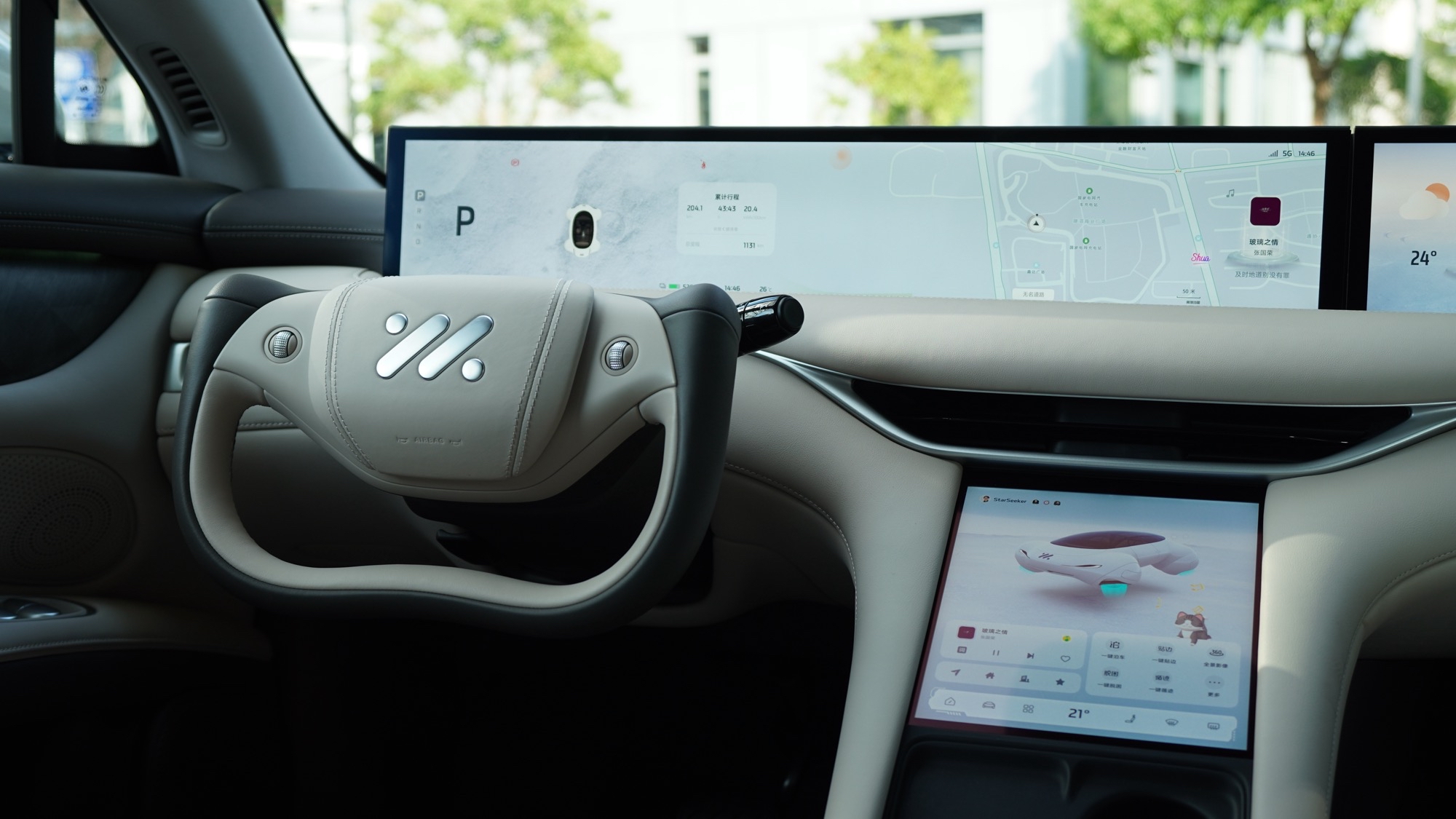 ZEEKR 001 adopts a more common screen layout, with the instrument panel, HUD, and driver-tilted center control screen independently arranged, which is the more familiar layout for most drivers. The screen layout of IM is more suited to smart cars, as all driving-related information is presented on the driver’s information screen. It also distinguishes between screens for interaction and display, allowing the screen to better serve driving orientation.
ZEEKR 001 adopts a more common screen layout, with the instrument panel, HUD, and driver-tilted center control screen independently arranged, which is the more familiar layout for most drivers. The screen layout of IM is more suited to smart cars, as all driving-related information is presented on the driver’s information screen. It also distinguishes between screens for interaction and display, allowing the screen to better serve driving orientation.
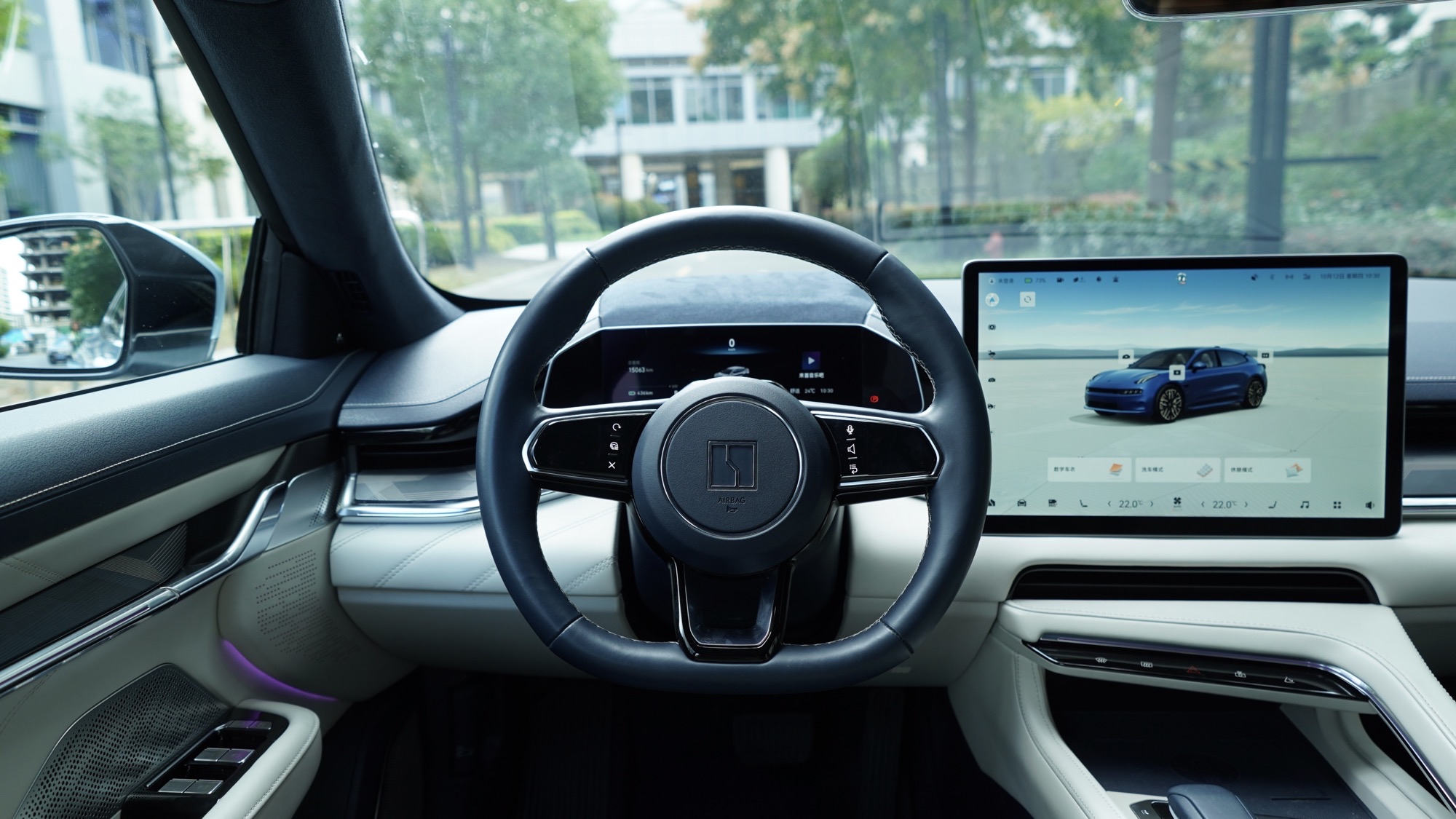
In terms of chipset, both IM LS6 and ZEEKR 001 employ Qualcomm Snapdragon 8155, and the theoretical performance of both infotainment systems is fundamentally identical.
When it comes to the sound system, the IM LS6 boasts a 7.1.4 panoramic sound with a total of 20 speakers. The 7 surround sound channels, 1 subwoofer channel, and 4 overhead channels can better reproduce the sensation of a live performance. IM has also constructed a panoramic sound zone for this system to create a superior spatial auditory experience.
The ZEEKR 001 under comparison, fitted with YAMAHA sound system, comes off a bit lacking in spatial accuracy, offering only stereo effect. Sounds from above and the front and back are not very distinctive in terms of location.
Due to the differences in grade and price, some hardware configurations of ZEEKR 001 are still superior to LS6. For instance, rear row screen and comfort configurations, ZEEKR 001 definitely has an edge.
IM LS6, with its high-quality screens and multi-screen interaction, features a sufficiently robust smart cockpit hardware configuration. The well-equipped hardware paves the way for software experience, offering more room for software and system enhancements.
Good systems stem from good hardware
Under the same hardware power, system optimization directly affects user experience. Superior on-board computer systems can better serve driving and allow users to achieve higher levels of customization—how do these two cars compare in this respect?### Variations in UI Design Philosophy
For the system UI design, the IM LS6 provides enough delicacy and refinement, whether it’s function keys or App icons, there’s no lack of detail. Simultaneously, the design of different screens carries a high consistency.
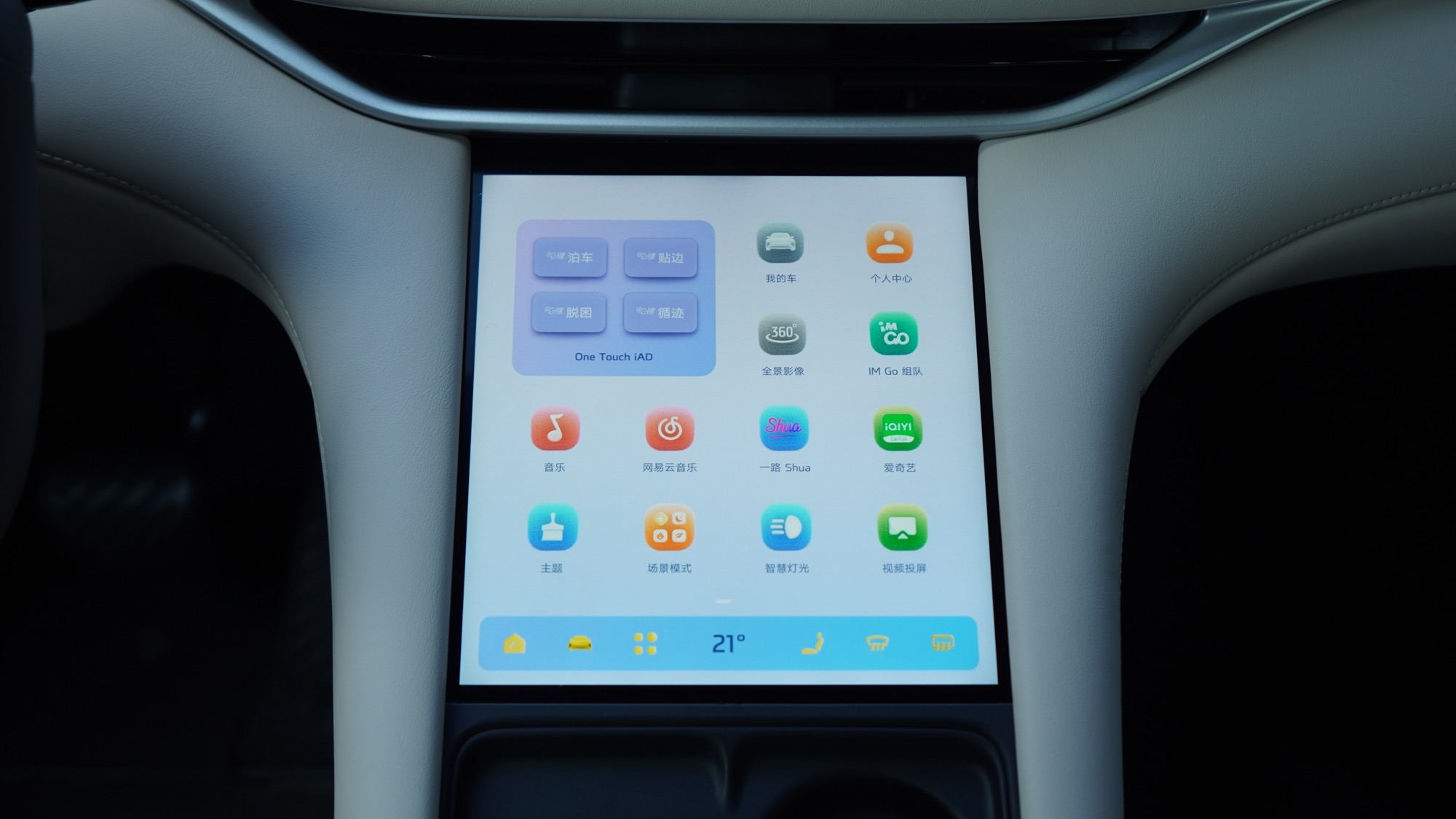
- The map interface has been optimized for the system, aligning the map’s color scheme with the rest of the system. The interface edge and instrument panel transition smoothly, which is aesthetically pleasing.
- All App icons hold a unified design style and adapt well after theme changes.
- Mainstream audio platforms QQ Music, NetEase Cloud Music, and Himalaya have been further customized for onboard usage and are optimized for multi-screen display.
- The function control screen integrates a plethora of function buttons, conveniently accessible by the driver.
- The vehicle’s system comes with several preset themes. Depending on the theme, the color configuration and 3D vehicle model display will change accordingly.
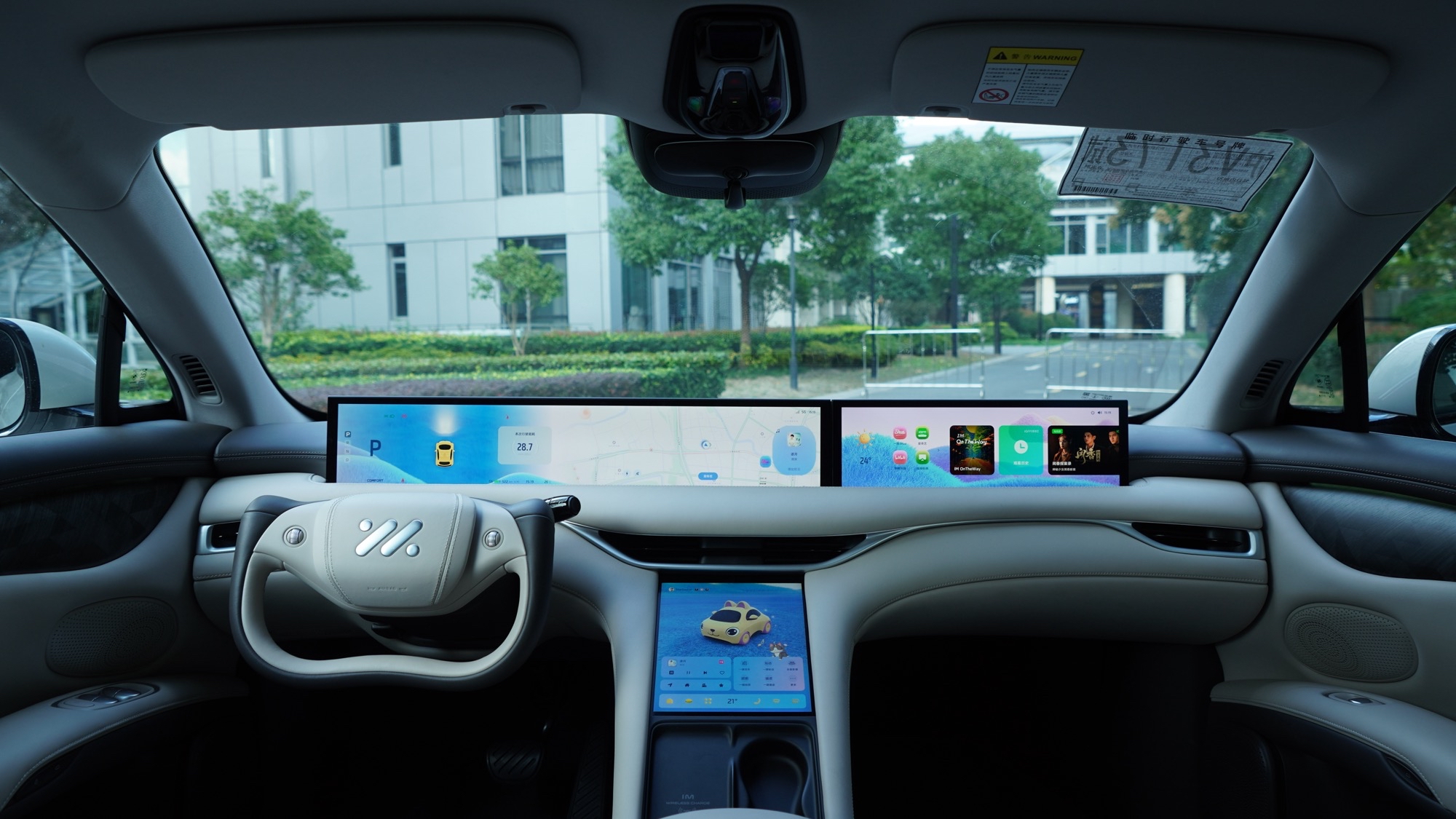
One noteworthy detail is the considerably large text display, which is larger than some commonly used functions’ icons. This deviates from the typical icon-small text combination seen on phones and computers.
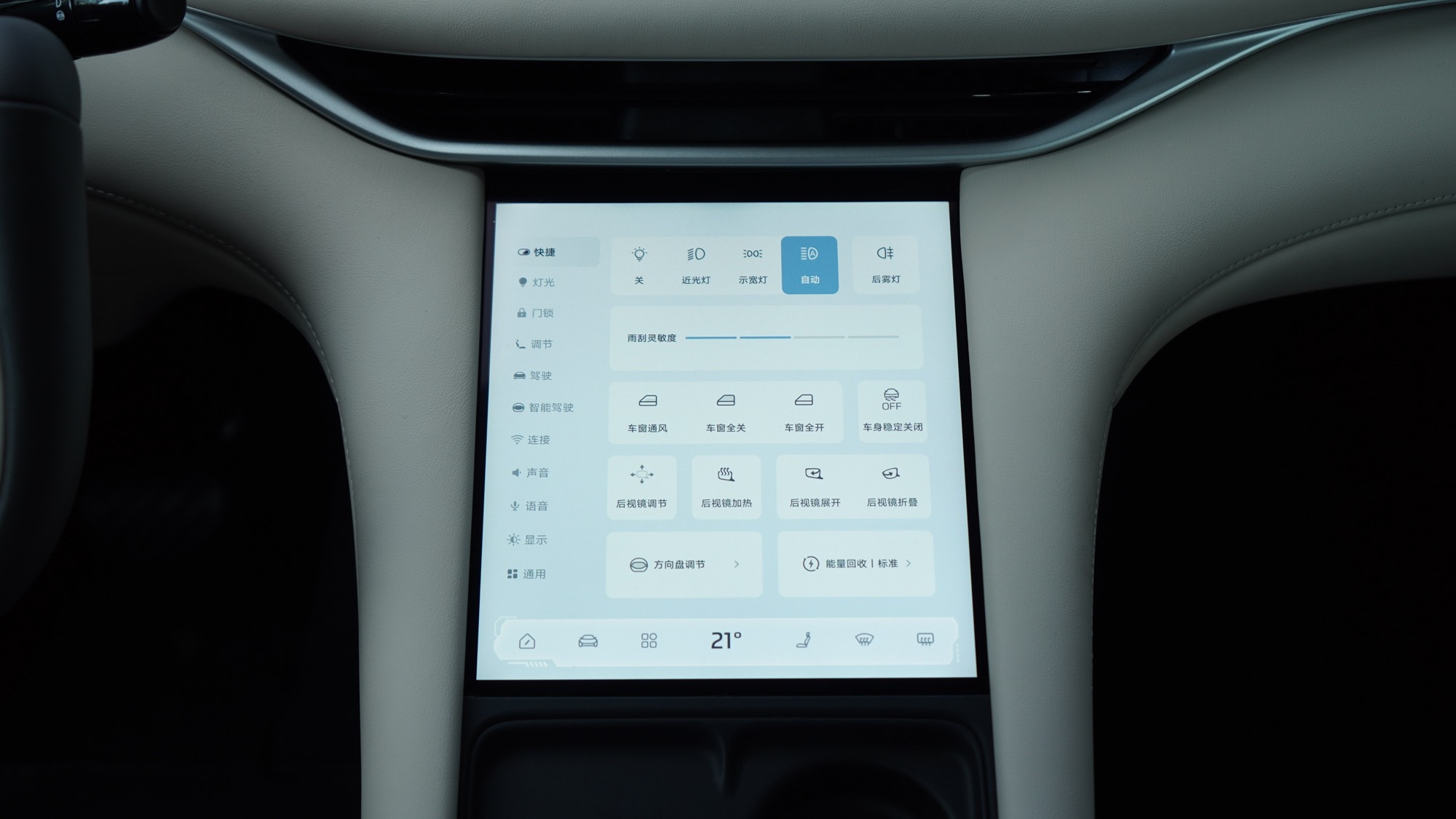
Having similar sized icons and text on the onboard system increases recognizability and reduces the chance of inadvertent touches due to unclear iconography.
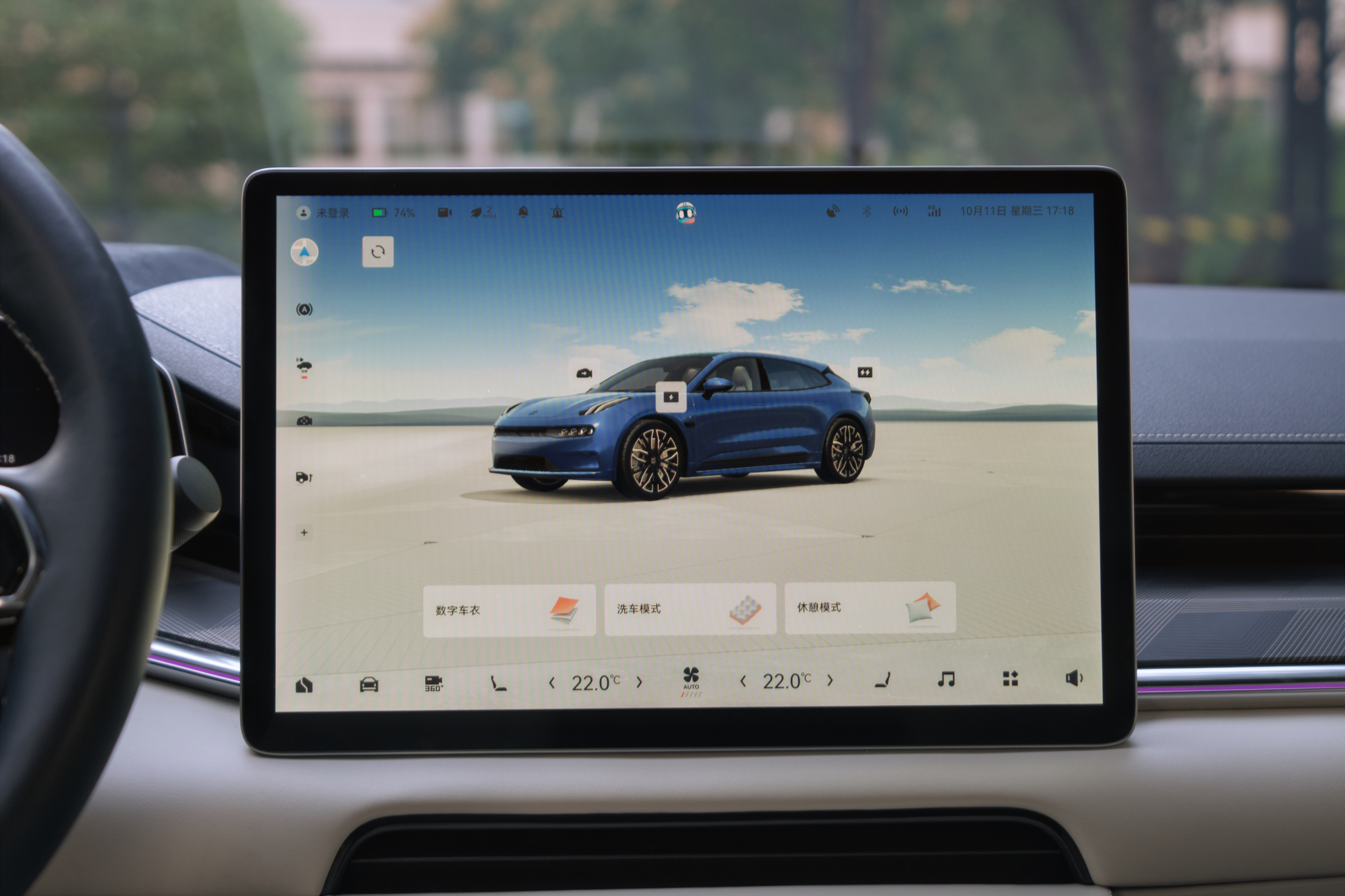
After the ZEEKR OS 5.0 update, the ZEEKR 001 has redrawn numerous icons and the system UI layout has maintained its sleek attractiveness.
In terms of design, ZEEKR 001 gives drivers more customization options. However, such customization isn’t just about switching themes, but about providing even more individualization.
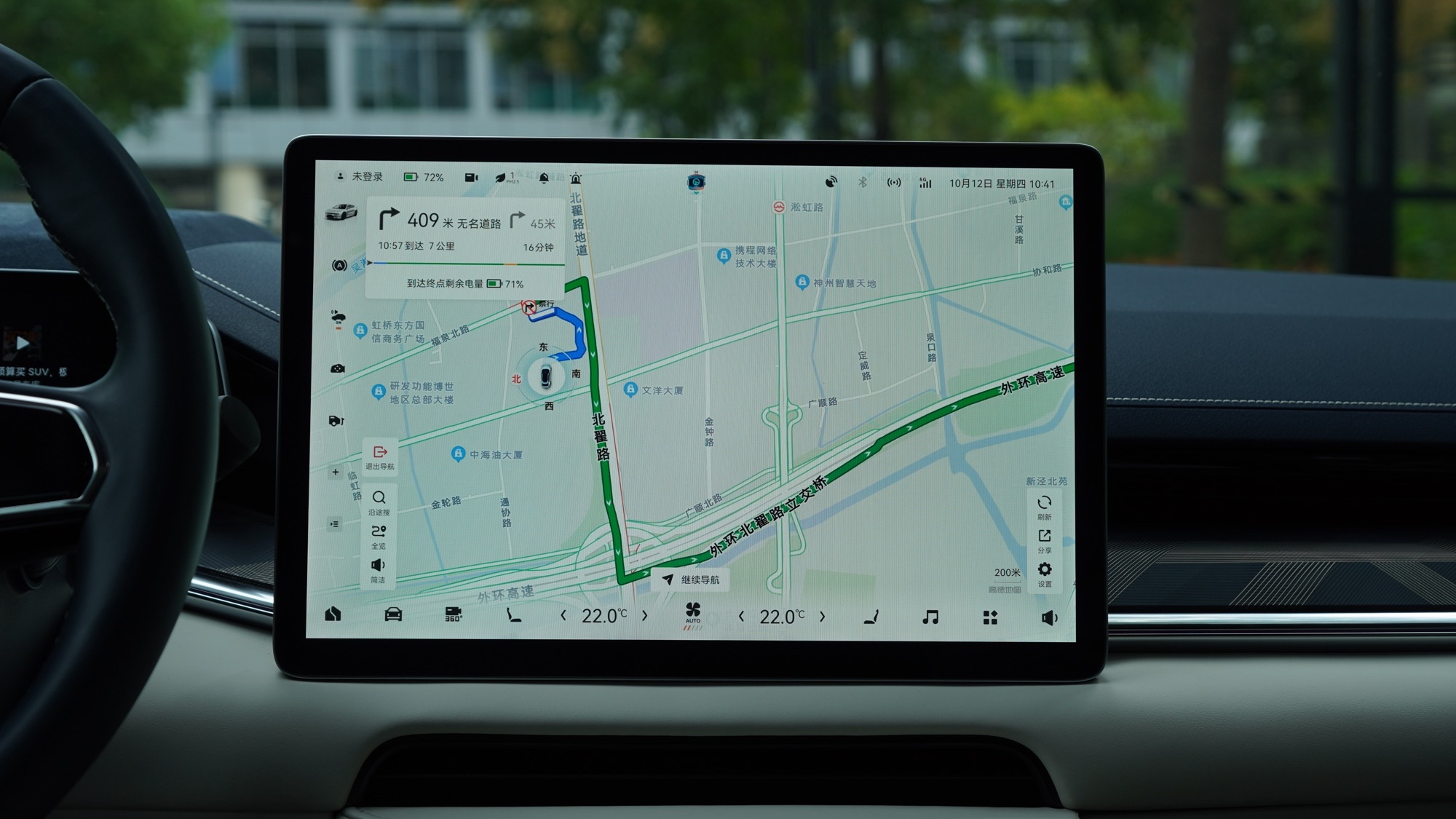
ZEEKR 001, for instance, offers vehicle control and map homepages; the 3D car model can freely switch car dress; the screen’s left side frequently uses the function button to freely select different function combinations; the map desktop’s widgets can be manipulated quickly and custom sizes to boot.
This is entirely different from the IM LS6 cockpit’s design philosophy. The latter takes a ‘lazy man mode’ design approach, allowing one-key theme changes for interface transformation. However, ZEEKR 001 takes more of a ‘developer mode’ design approach. Although it provides a higher level of customization, it makes the initial setup and learning process more complicated.### Instant Responsiveness: the Touch of Fluidity
For vehicle infotainment systems, smooth and responsive interaction is a key performance indicator. In simple terms, the lesser the screen lag, the more responsive the system.
The IM system on “IM LS6” (Chinese: 智己 LS6) outperforms that on “ZEEKR 001”. In our tests, IM IMOS 2.6.0 system had an average touch lag of 0.16 seconds, quicker than ZEEKR 001’s 0.22 seconds. Be it map navigation, screen swiping or app switching, IM’s system performed better.
Enhanced Features for an Enhanced Experience
Yet another determinant of a good infotainment system is the features it offers. The IM LS6 comes with a feature called “One Touch iAD”, which includes one-button parking, one-button side parking, one-button extrication, and one-button tracking.

Parking along a curb can be challenging. The “one-button side parking” feature allows moving the car 15cm to the left or right with each touch, making it easy to park along the curb.

Getting out of a narrow parking spot can also be tricky. The “one-button extrication” enables the car to adjust its exit angle automatically, aiding extrication.
Finally, the advanced SUV models feature tracking while reversing. When you enter narrow roads and find it hard to make a turn, the “one-button tracking” feature can help you reverse the car on the same path you came in.
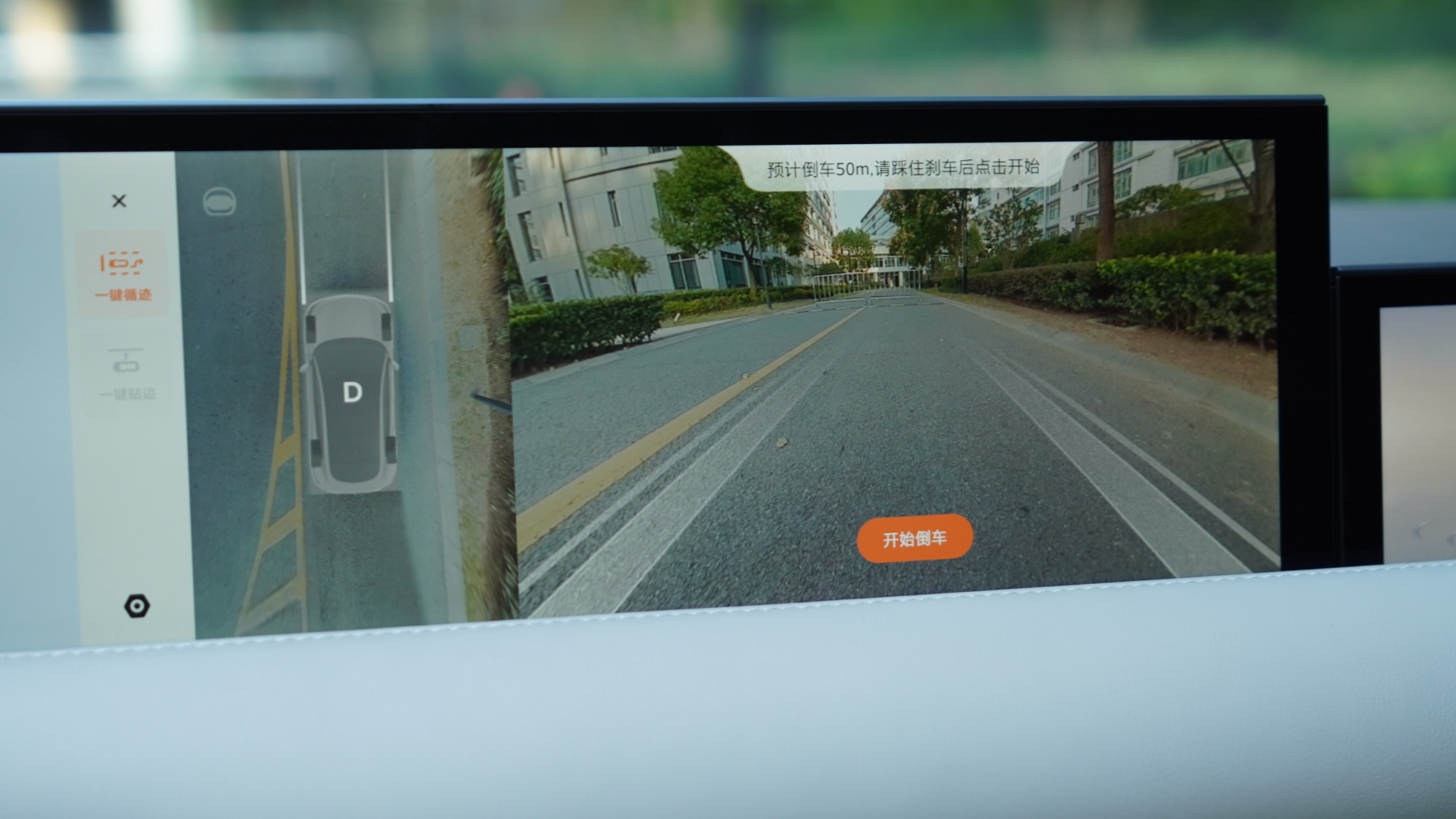
In my everyday commute, these features greatly reduced the anxiety of the initial and final 50 meters of the journey.
In comparison, the ZEEKR 001 only has remote straight in-out feature, with fewer intelligent parking options.
When driving in the city, the driver’s gaze inevitably jumps between the road, rear-view mirror, and infotainment screen, which may easily lead to safety hazards. Intelligent blind spot imaging can help the driver reduce these blind spots.
When the vehicle speed is below 20 km/h and the left turn signal is activated, the A-pillar blind-spot will be displayed on the IM LS6 screen.
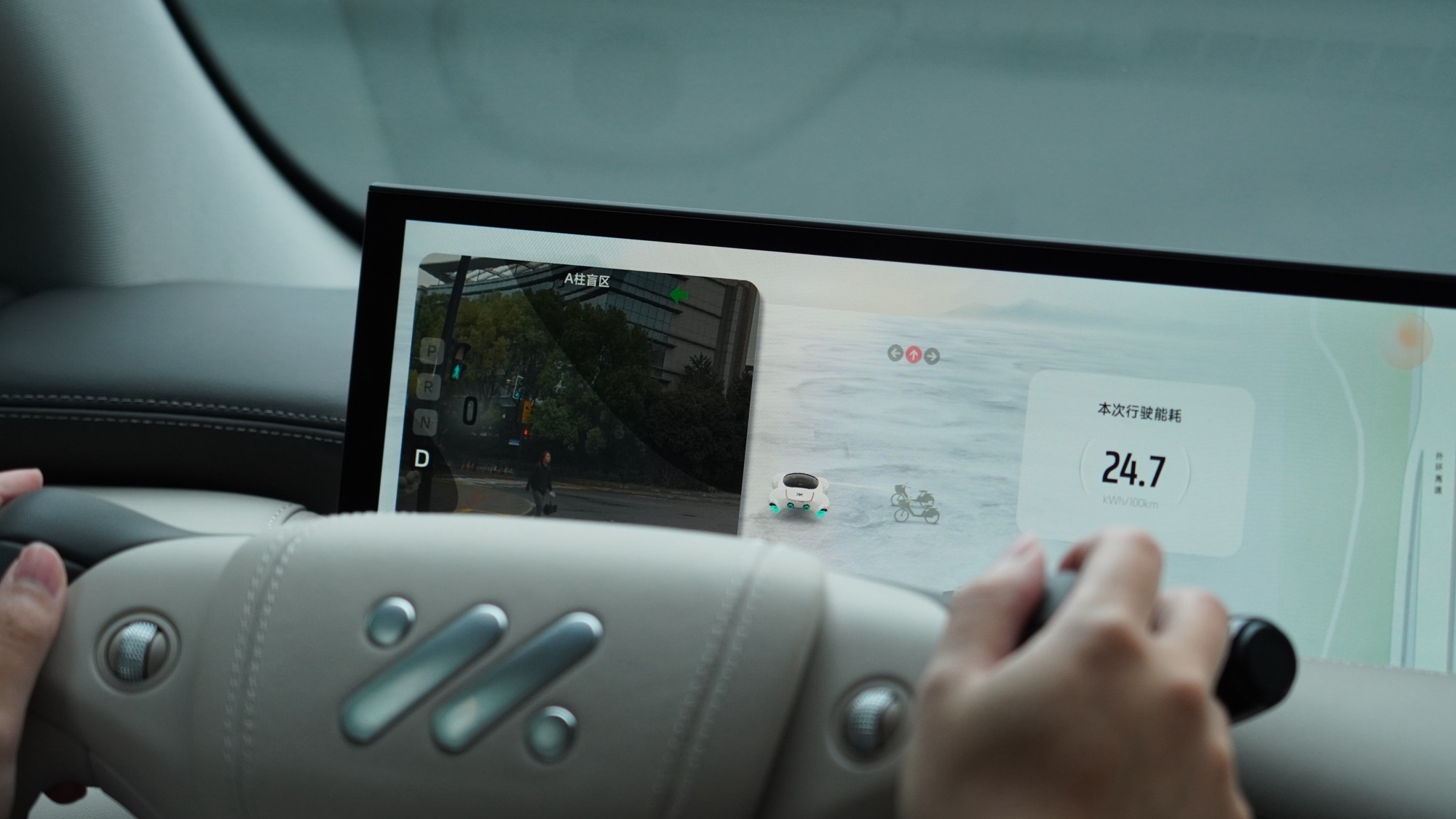
When the speed exceeds 20 km/h, a side-rear view will be displayed. Rolling the right-side steering wheel can quickly enable the rear view camera, providing a real-time rearview mirror right in your vehicle.
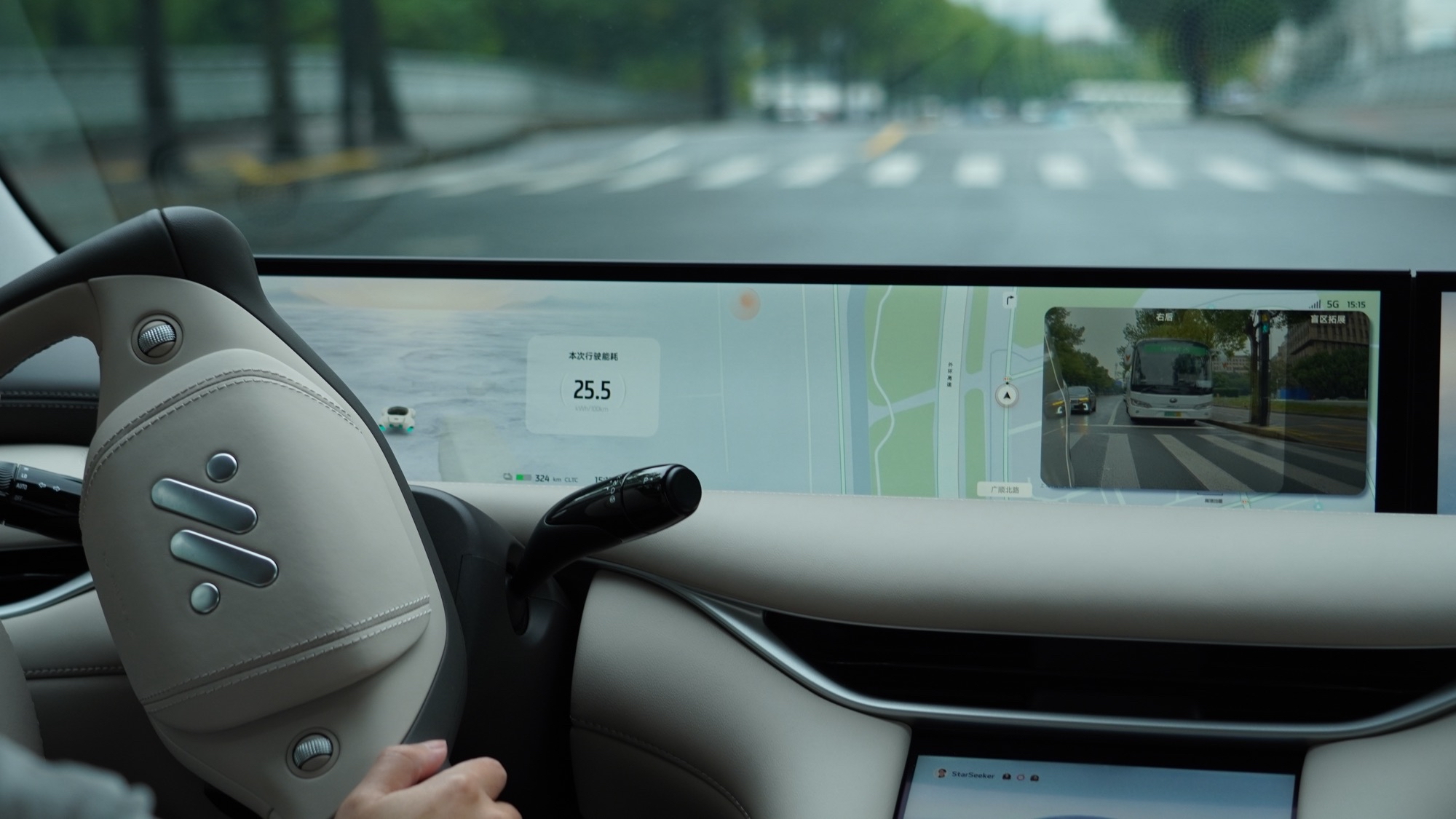 Similar functionality is also equipped on the ZEEKR 001, displaying only the bird’s-eye view realized by surround-view cameras. However, because of the limitation of screen layout, the bird’s-eye view is still located on the right side of the driver during the left turn, which may discourage some drivers from using it.
Similar functionality is also equipped on the ZEEKR 001, displaying only the bird’s-eye view realized by surround-view cameras. However, because of the limitation of screen layout, the bird’s-eye view is still located on the right side of the driver during the left turn, which may discourage some drivers from using it.
At the same time, there are some differences in clarity. The IM LS6 directly calls up the images from the auxiliary driving cameras, such as the 8 megapixel front-view camera for the A-pillar blind spot supplementation, offering significantly higher clarity. This demonstrates a deeper integration of the cockpit and smart driving in the IM LS6.
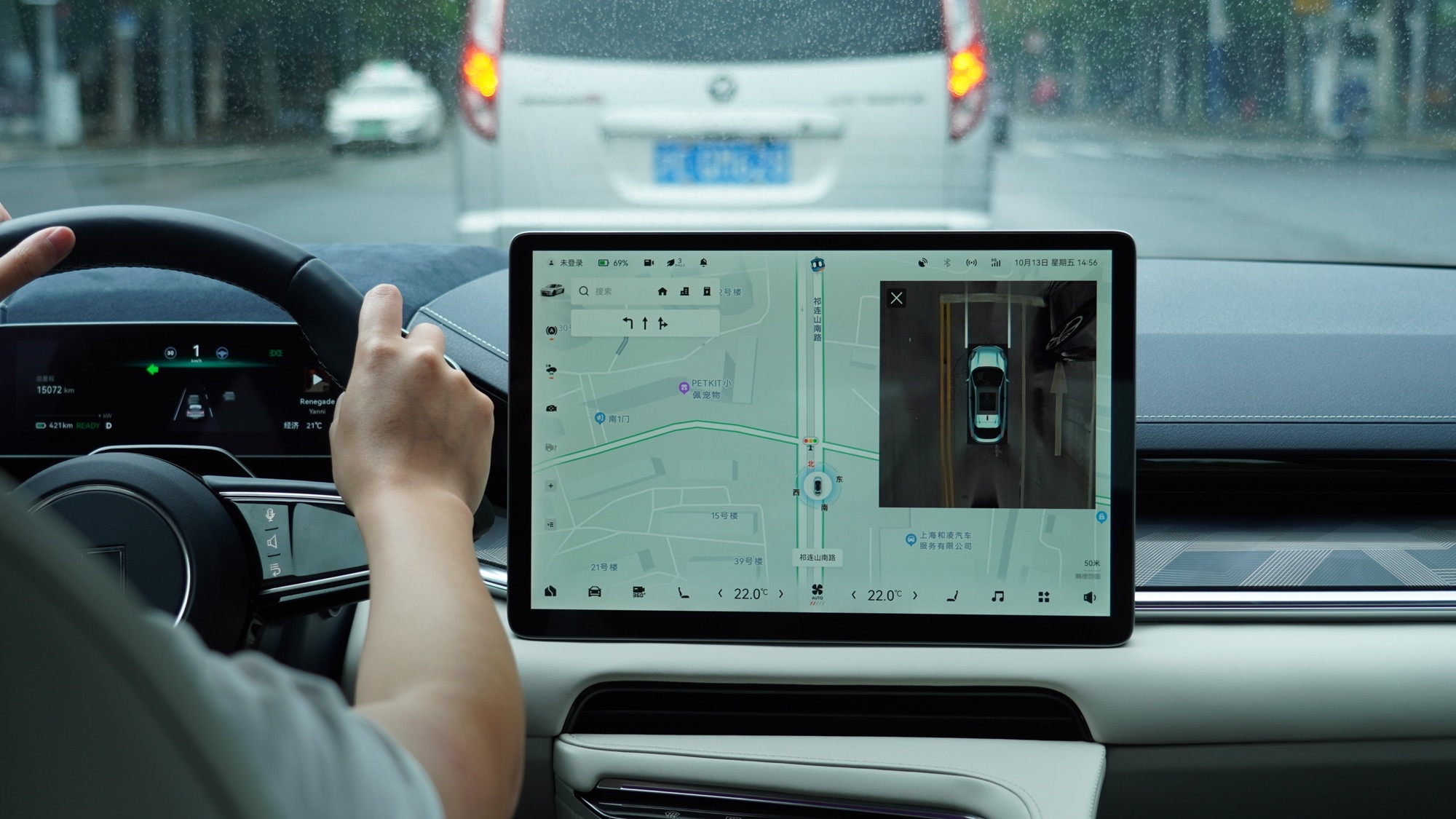
After a comparison of system UI and functionality, the IM LS6 outperforms the ZEEKR 001 in terms of system customization, interface aesthetics, and basic functions.
In the current era of human-computer co-driving, practical system features reduce driving anxiety and enhance focus on the road ahead.
At the same time, the advancement of the IM LS6 features is achieved thanks to its excellent hardware. This is also the reason that the IM LS6 has exclusive functionalities among vehicles priced around 200,000 yuan.
The Application Ecosystem Makes for a Fun Experience
Having an excellent system in place, the next “checkpoint” is the application ecosystem. In this respect, hardware is still a priority. The excellent audio system and the rare secondary driving screen in vehicles priced around 200,000 yuan, can the IM LS6 provide a fun experience for both the main and co-drivers?
On the IM LS6, QQ Music, NetEase Cloud Music, and Ximalaya all have customized interfaces, along with the IMUSIC platform and other third-party news apps, the audio content is adequately rich. Particularly noteworthy is the deep customization of the two core music platforms.
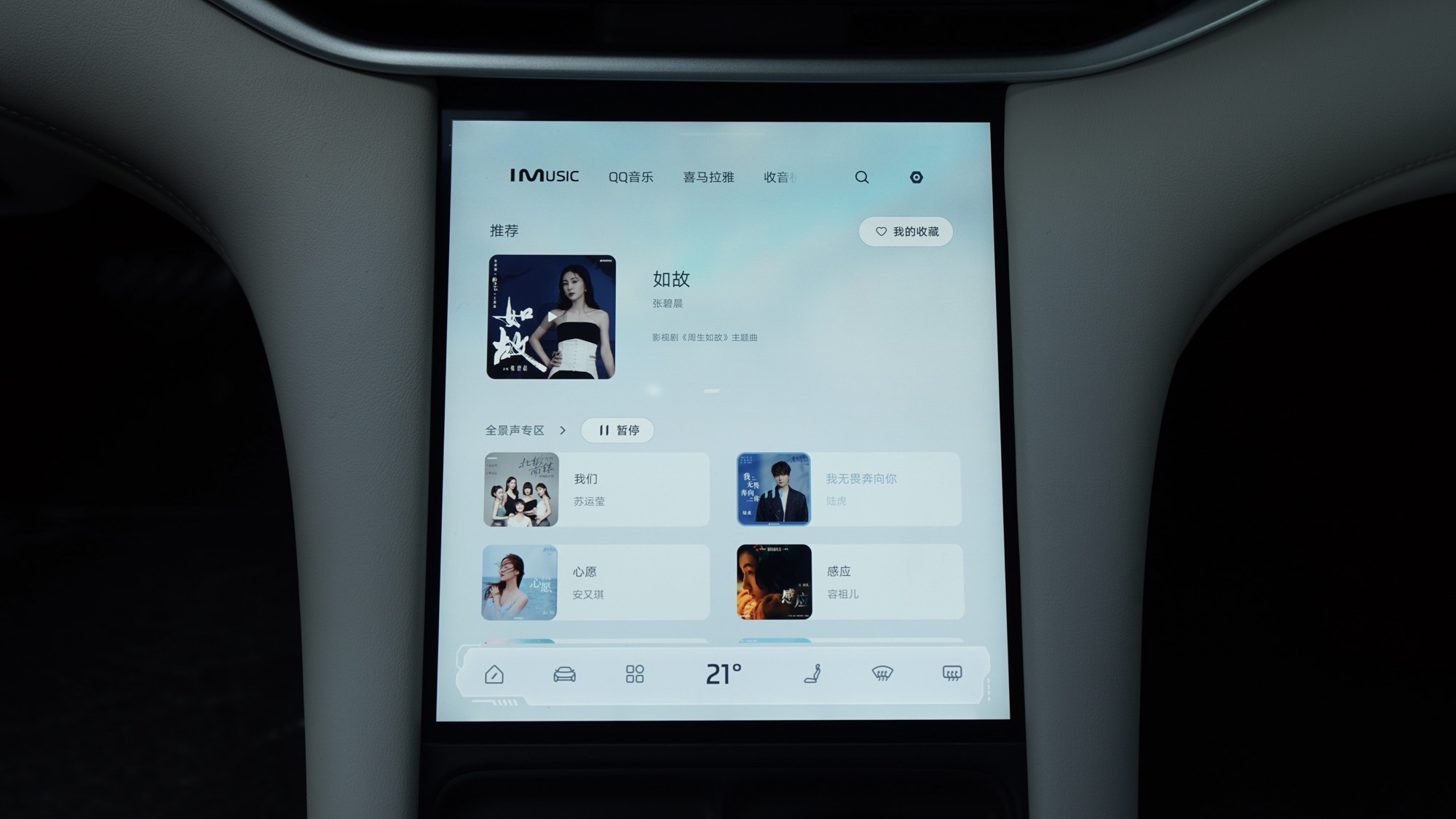
For videos, it also features Bilibili and iQIYI, which are both compatible with the vehicle screen for a pretty good experience.
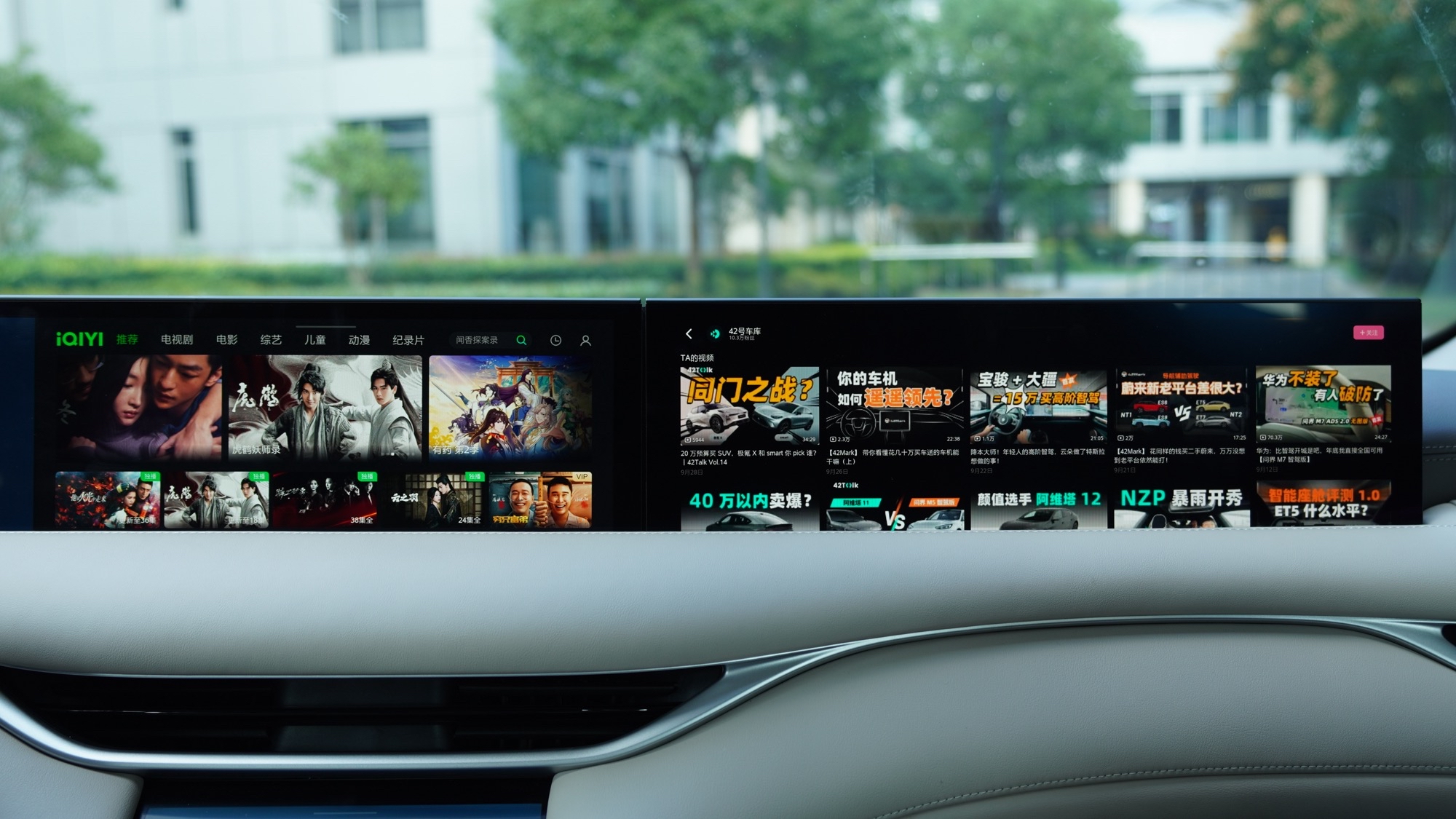
The application ecosystem of the ZEEKR 001 is slightly richer than that of the LS6, with additional Migoo Video, Leishi KTV, and 2048 mini-games.

In fact, catching up in the application ecosystem is relatively easy, one OTA update takes care of it all. However, a good application ecosystem presupposes a huge amount of users, for instance, Tesla’s sufficient sales allow for almost all major audio and video platforms in the vehicle. Therefore, enhancing the ecosystem of the IM LS6 relies on both the manufacturer’s progress and sales-related factors.Over the past six months, IM has gradually updated the vehicle system with numerous handy features such as One Touch iAD, On the Go Shua, IM Go Team, and more. The vehicle experience is becoming more refined. Meanwhile, the newly released IM LS6, which hit the market less than a week ago, has already received 38,000 mini orders.
Another aspect of the ecosystem is to make the in-car system more enjoyable, and both the IM LS6 and ZEEKR 001 offer a range of fun features, such as smart exterior lighting.
On the rear lights of the IM LS6, various patterns can be displayed, greeting the driver behind or showing different patterns like thank you, thumbs up, etc. This feature is highly customizable, yet not achievable on the ZEEKR 001.
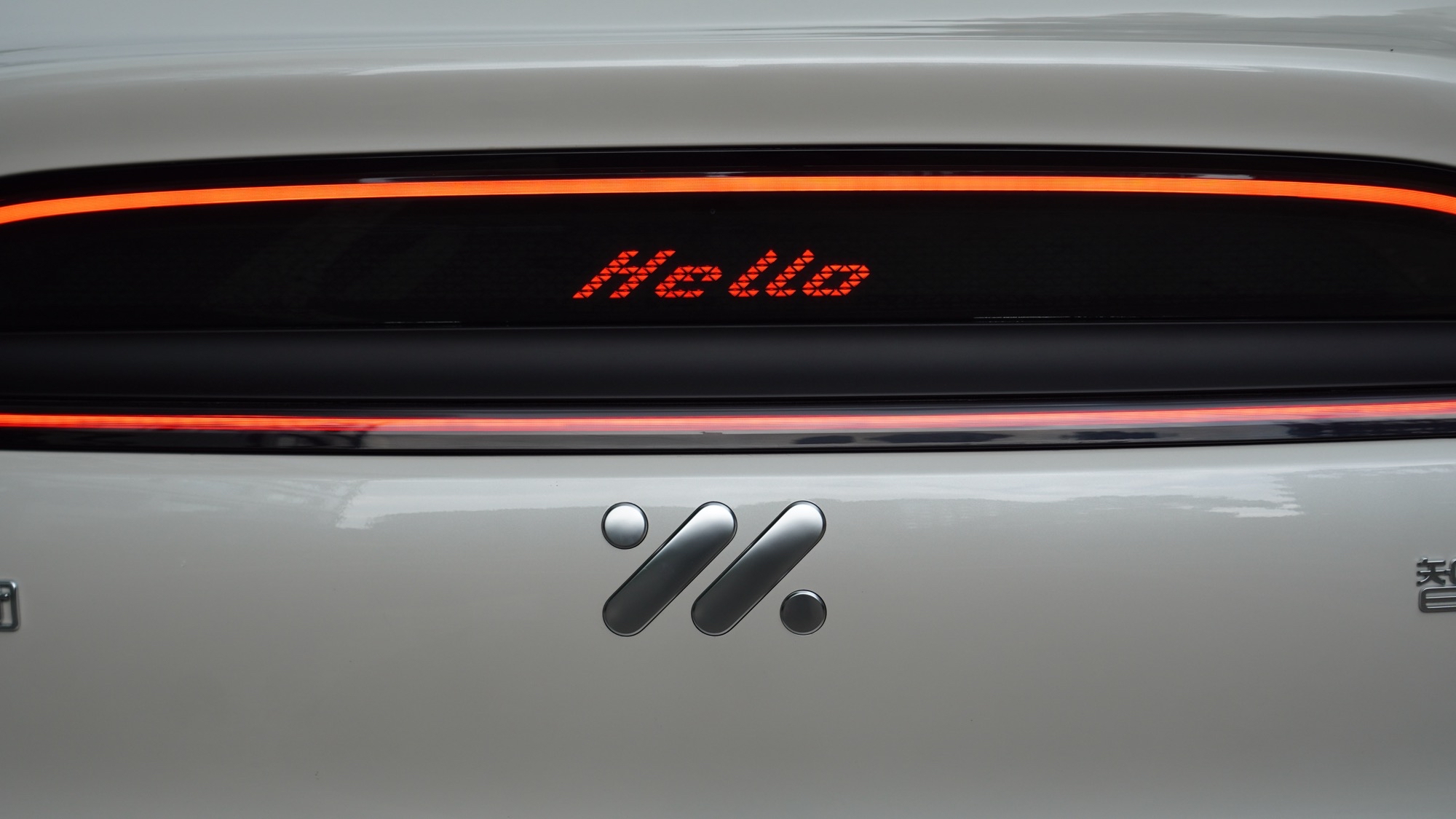
In the stationary state, there is even more fun with lighting show. However, ZEEKR 001’s lighting show is slightly cooler. Once activated, the ZEEKR 001 can blink all lights on the vehicle body, creating a more dazzling spectacle when parked.
Final Words
From a comprehensive product strength and price perspective, with a starting price of 229,900 yuan, an 800V silicon carbide platform, multi-dimensional intelligent cockpit, high-level intelligent driving assistance systems, and more, the newly launched LS6 possesses all characteristics of an excellent electric vehicle.
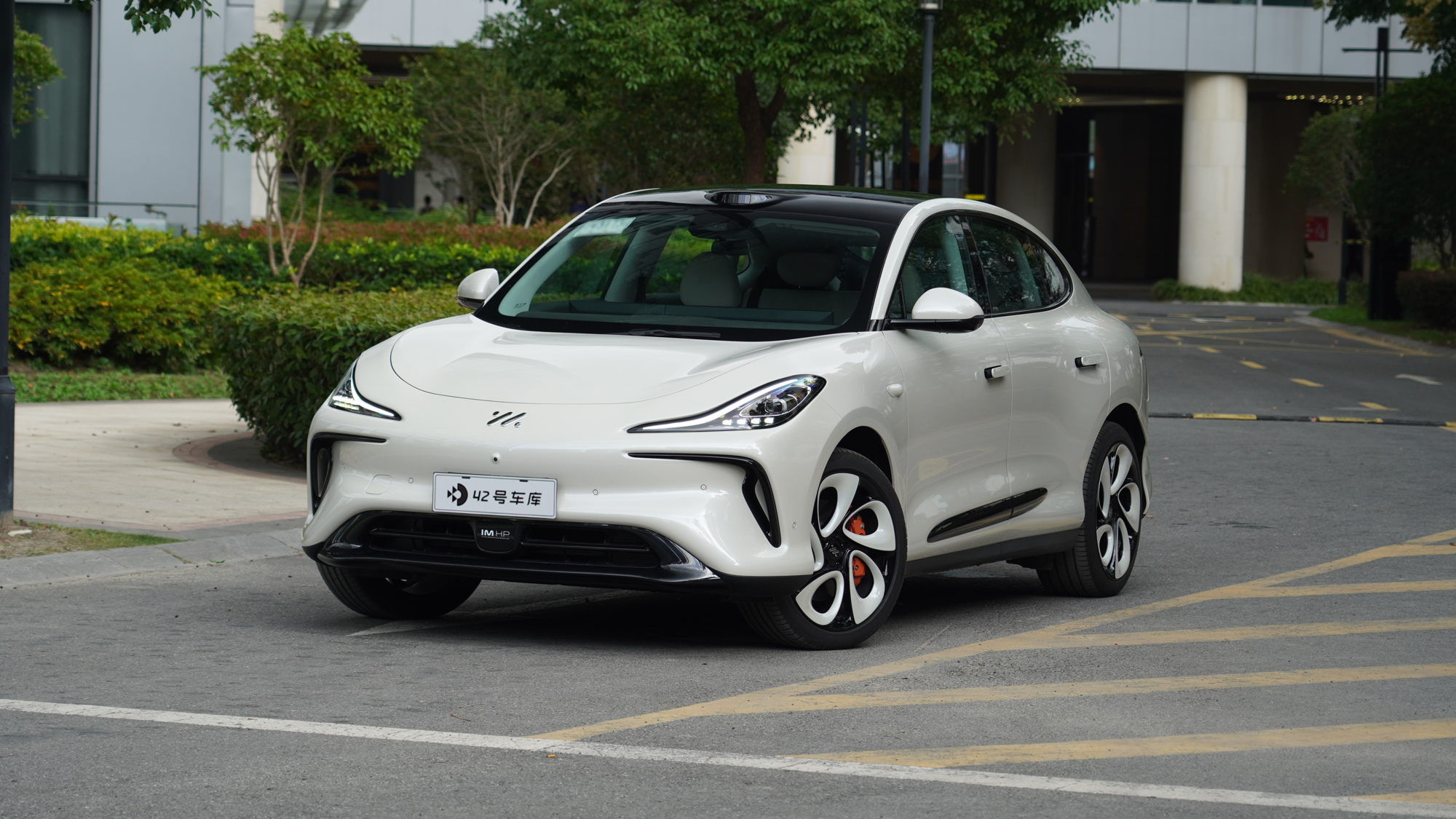
However, precisely priced between 200,000 and 300,000 yuan, there is no shortage of strong competitors. None of the already released Tesla Model Y and Xpeng G6 are ‘easy to provoke’. Cutting to the quick of customer pain points and discernable competitiveness is the surest path to victory in such a fiercely competitive market.
Not different from this, IM LS6 is competitive in the core areas of three-electric, assisted driving, and intelligent cockpit. With everyone focusing on 800V, the high-end models of IM LS6 directly go with ‘near 900V’; even assisted driving is prevalent, LS6 standardizes laser radar across all models; intelligent cockpit is also crucial, but LS6 adds an additional co-driver screen. Additionally, the front and rear windows of LS6 are all double-glazed.
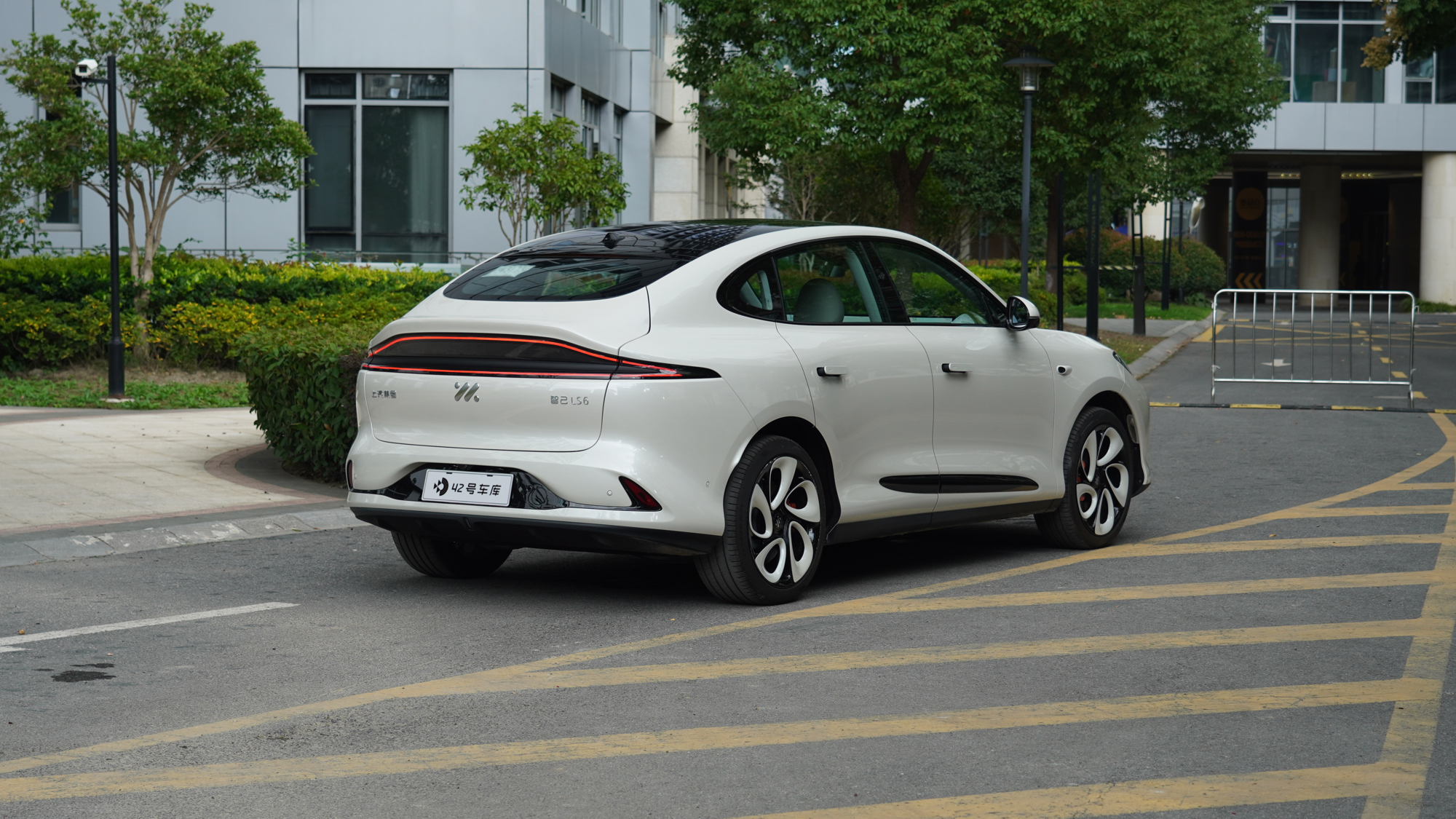
The price war in 2023 is ongoing. For consumers, whether it’s navigation-assisted driving, 800V, or an excellent intelligent cockpit experience, the sweet spot period for these new technologies has arrived. The IM LS6, entering the market at 229,900 yuan, has intensified competition in the 200,000-300,000 yuan pure electric SUV market, while also allowing superior technology to proliferate.
This article is a translation by AI of a Chinese report from 42HOW. If you have any questions about it, please email bd@42how.com.
